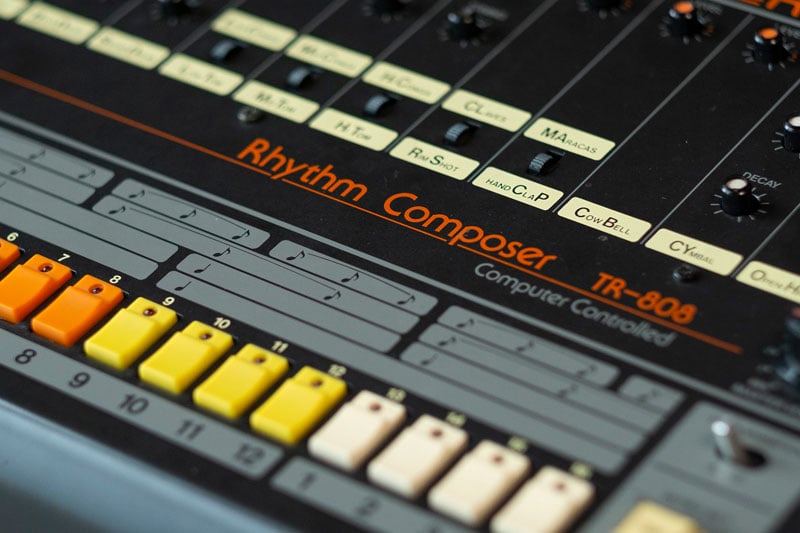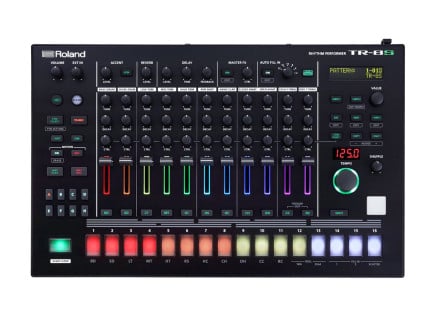Known today for its rich sine wave kick drum, the TR-808 has become a stand-in for bass and beats in popular culture. But long before Britney Spears claimed “you got my heart beating like an 808” in 2008’s “Break The Ice,” or Kanye West dedicated an entire album to the rhythm composer, the world’s most popular drum machine seemed to be a failure.
First released in 1980, the humble TR-808 was intended as a backing instrument for use by artists recording demos who couldn’t afford pricey studio time. But thanks to analog circuits that recreated sounds rather than playing samples of actual drums, the TR-808 didn’t sound anything like a drum kit.
That immediately placed it at a disadvantage to its main competitor at the time, the Linn LM-1. The LM-1, which retailed for an eye-watering $5,500 ($17,100 adjusted for inflation), was sample-based, with rich, authentic drum kit sounds. Both the TR-808 and LM-1 were relatively simple to program, which was a noticeable shift from previous drum machines that shipped only with unchangeable presets—a plight unfathomable today.
What the TR-808 did have on its side was price. Selling for less than $1,000 at the time ($3,100 today), it was a cheap but uncanny simulacrum of a drum kit. Its 16-step sequencer made writing patterns quick, and each drum was tuneable and customizable—a huge plus to artists.
It found a few fans. The TR-808’s first major use came from Japanese synthpop group Yellow Magic Orchestra, who featured the TR-808 on their 1981 record “BGM,” initially performing live with it the year prior.
In 1982, Marvin Gaye was staying in Ostend, Belgium, without a band but with access to a studio of synthesizers and drum machines, including a TR-808. Using the TR-808, he wrote and recorded the chart-topping “Sexual Healing.”
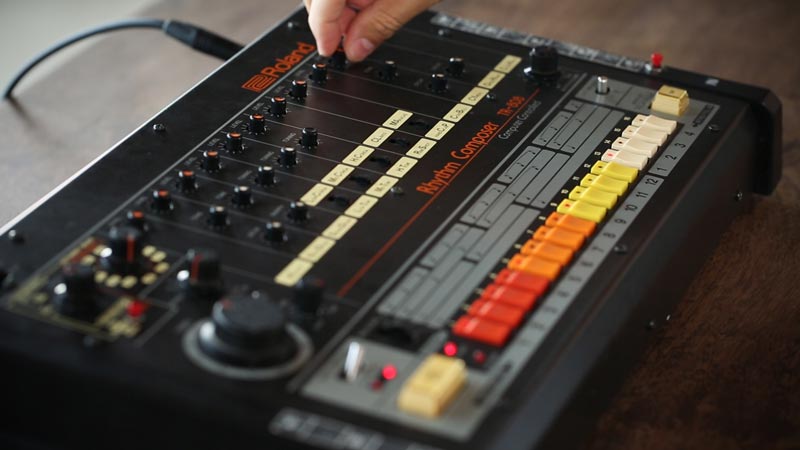 Tuneable and customizable drums set the TR-808 apart.
Tuneable and customizable drums set the TR-808 apart.
That same year, in the Bronx, New York, Afrika Bambaataa and the Soulsonic Force released “Planet Rock,” which started edging popular music away from disco towards electro and hip-hop. Inspired by Kraftwerk and Yellow Magic Orchestra, the track showcased the TR-808’s stripped-down, futuristic sound to a curious audience. (Hip-hop pioneer Bambaataa was removed as head of the Zulu Nation, a hip-hop advocacy group he founded, in May 2016, following allegations spanning decades that he sexually assaulted at least four teenage boys; Bambaataa has denied all accusations.)
But a low price and handful of hits could not save the TR-808. No one was buying the drum machine. Just three years later, Roland stopped making it, after reportedly selling just 12,000 units during its run. The TR-808 quickly became the purview of pawn shops. Shortly after Roland ceased production, its price-tag dropped to just $100, according to Fact Magazine. This made it popular with a new wave of producers starting out.
Techno
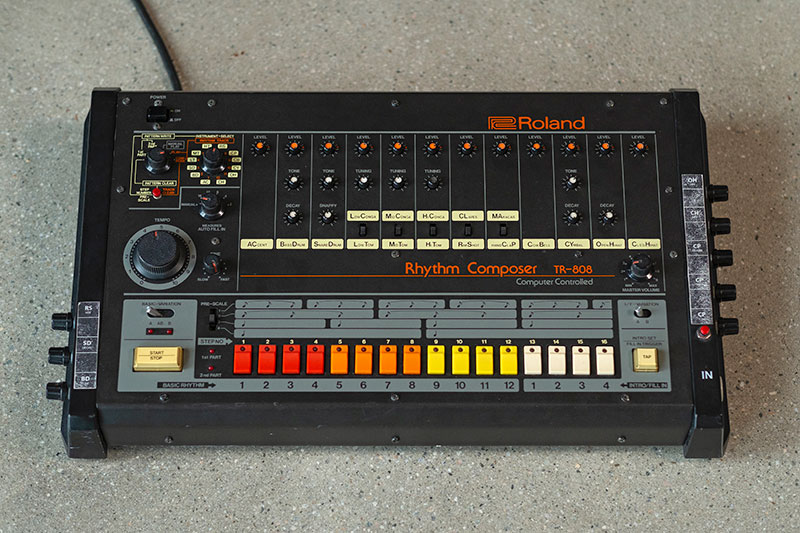 Available at a discount, TR-808s became newly popular.
Available at a discount, TR-808s became newly popular.
In Detroit, techno’s pioneers quickly got their hands on the discounted drum machine. Producer Juan Atkins reportedly purchased his first TR-808 when he was still in high school, to use in his band, Cybotron.
"The 808 allowed you to actually build your own patterns – you were able to put the kick drums and snares where you wanted them,” Atkins told The Guardian. “It opened up a lot of creativity."
Quickly, TR-808s became DJ tools, forming the original hybrid set. DJs such as Atkins would show up to parties with records and a TR-808. Even then, its drums were guaranteed to get a party going.
Acid House
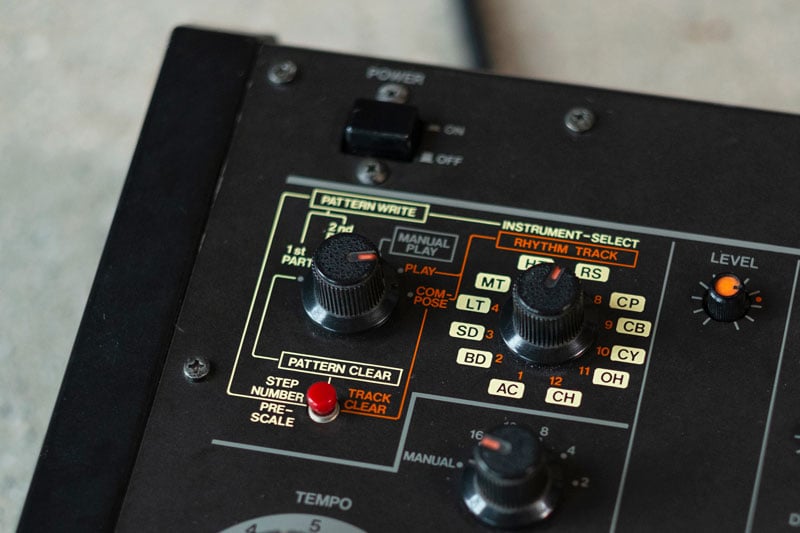 Choosing and accenting different drums with the 12 position selector made programming easy.
Choosing and accenting different drums with the 12 position selector made programming easy.
In Chicago, Nathaniel "DJ Pierre" Jones was among the house pioneers combining the TR-808 with a Roland TB-303 to create the squelching dance music subsequently known as acid house. According to Jones, he and his comrades in sound would share a single 808 to record their tracks.
"I would call whoever: 'Yo, you got the 808?' And they'd say, 'No, so and so has it,’” Jones told NPR. “When you found out who had it you'd say, 'I need to get the 808, when are you going to be done with it?'"
Hip-Hop
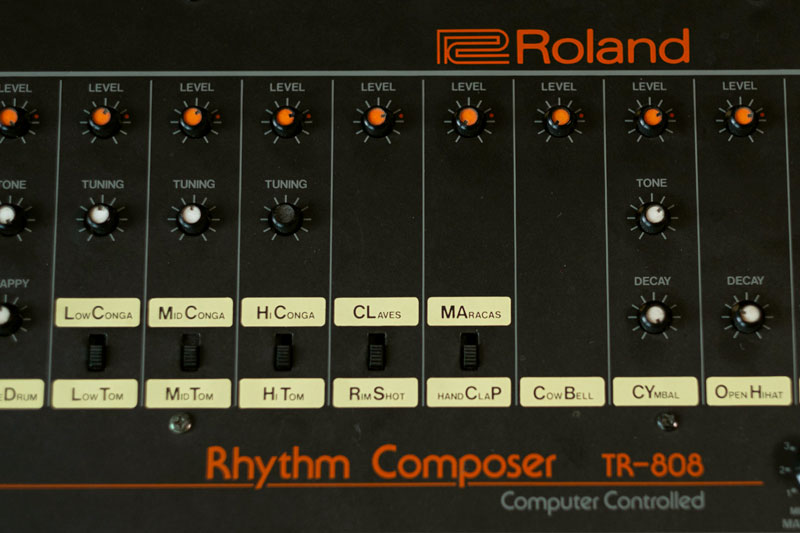 With individual levels for each drum, highlighting particular timbres was possible.
With individual levels for each drum, highlighting particular timbres was possible.
To the nascent genre known as hip-hop, the TR-808 became a calling card. Artists bubbling out of the Bronx, New York, were looking to combine the raw energy of emcees rapping at block parties with a new sound that pushed beyond disco. They turned to the TR-808 that Bambaataa had popularized. It appeared on the Rick Rubin-produced “It’s Yours” in 1984, which was hip-hop label Def Jam’s first release. The TR-808 rings on throughout Beastie Boys’ seminal 1986 License To Ill. With the backing of mega producers such as Rubin, the TR-808 soon became synonymous with hip-hop.
Across the country in Los Angeles, California, a DJ known as Egyptian Lover sought out a TR-808 after discovering it was used on “Planet Rock.” “It blew me away,” said Egyptian Lover, real name Greg Broussard, speaking to The Guardian. “Everything sounded a bit toy-like, but at the same time it made you want to dance.”
He bought one and played live with the drum machine the next day in front of 10,000 people, he says. Egyptian Lover would go on to become one of electro’s biggest exports, bridging the gap between electro and hip-hop.
As East Coast hip-hop producers moved beyond the TR-808 in the 1990s, Southern hip-hop continued to embrace the instrument. Rapper Lil Jon remained a loyal devotee, bumping TR-808s throughout his biggest crunk tracks of the early 2000s.
Producer and rapper Kanye West even named an entire album after the machine, with 2008’s 808s and Heartbreak. Its combination of auto-tuned vocals and stripped down drum beats highlighted the TR-808’s other-worldly quality, just as “Planet Rock” had 26 years prior.
Present Day
Since hip-hop surpassed rock to become the most popular genre in America in 2017, the TR-808 is omnipresent. Today, its signature kick drum is heard most potently in the trap music popularized by Atlanta, Georgia, rappers such as Migos, who hit the mainstream in 2013. The Atlanta production duo and trap originators 808 Mafia are so reliant on the TR-808’s sound that they even named themselves after it. Their sonic heirs, including Metro Boomin and Sonny Digital, all lean on the TR-808 for platinum-selling hits.
Original TR-808s now retail secondhand for upwards of $4,000, a far cry from their former $100 bargain pricetag. But Roland has worked to make its ubiquitous sound accessible to a new generation. It released its AIRA TR-8 in 2014, a digital remake that combines the sounds of the TR-808 and sibling TR-909 in one machine. Roland followed that up with a miniature analog reboot, the TR-08, in 2017. It expanded upon its AIRA version with the TR-8S in 2018, which includes the ability to use the drum machine as a sampler. In the world of modular, makers such as Tiptop Audio have replicated the TR-808 drums in discrete modules.
To celebrate 808 day, we’ve put together a playlist of just a few tracks across genres that have made use of the TR-808. Please note, some of the songs contain explicit lyrics. Enjoy!

